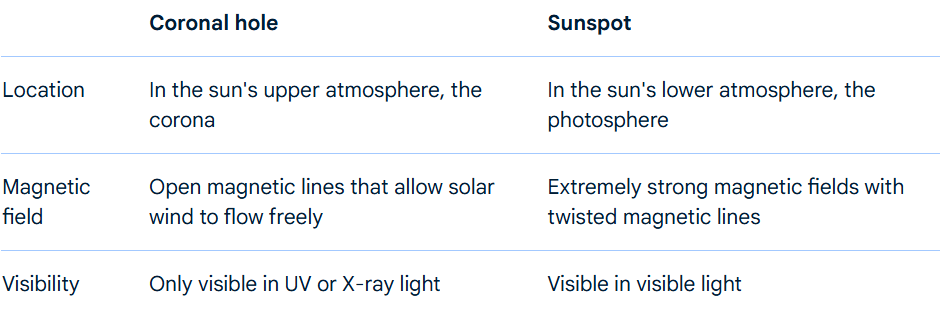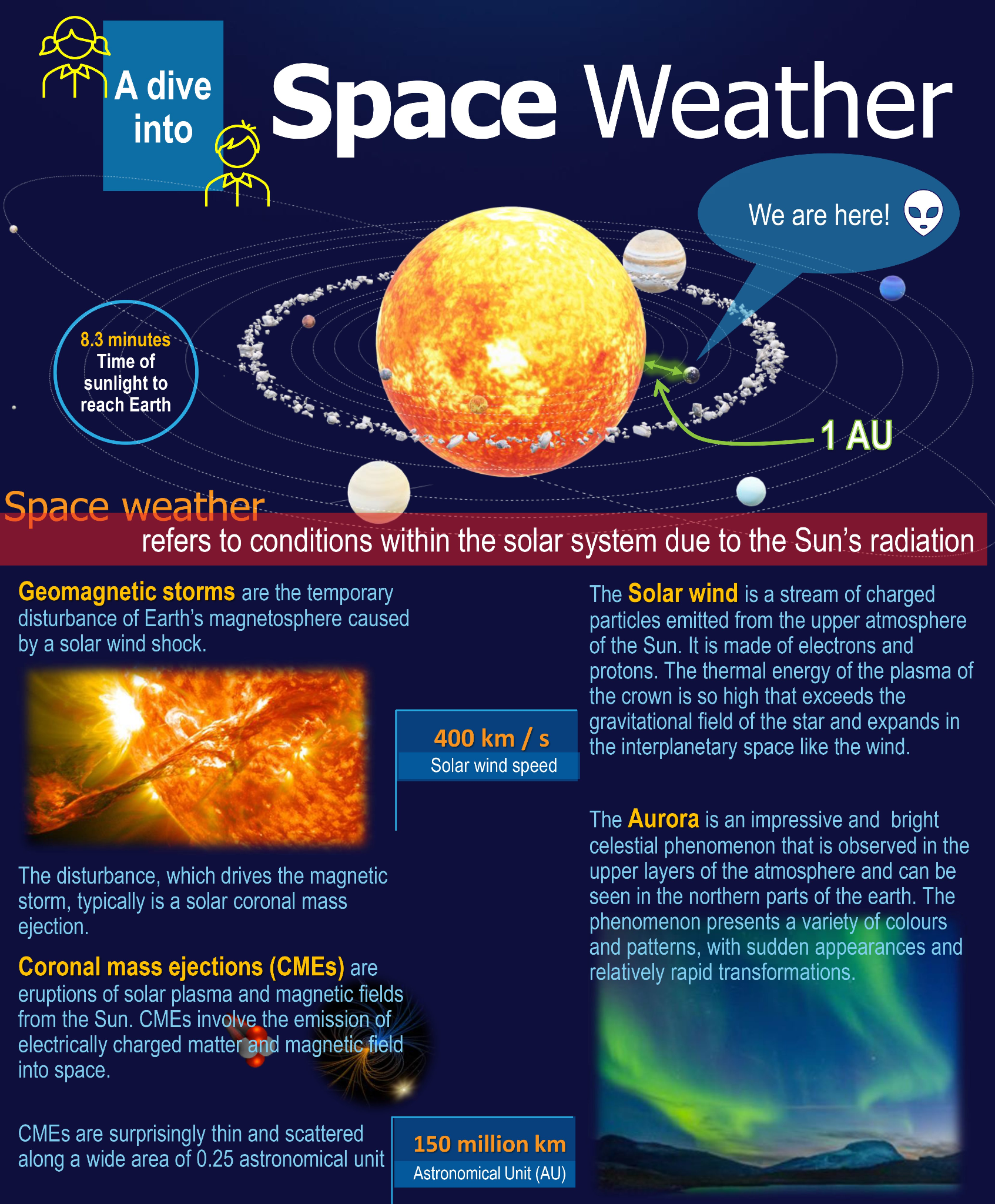Solar Coronal Holes | 24 Feb 2025
The study has revealed that Indian astronomers have accurately estimated the thermal and magnetic field structures of solar coronal holes (SCH).
What are Solar Coronal Holes?
- About: Coronal Holes are large, dark regions on the Sun that are cooler and less dense than the surrounding plasma. It was first discovered in the 1970s by X-ray satellites.
- Occurrence:
- They occur in areas where the Sun's magnetic field is open to interplanetary space, allowing high-speed solar wind (geomagnetic storm) to escape.
- Open magnetic field lines are magnetic field lines that do not form closed loops but extend outward into space without returning to their source.
- Coronal holes are most prevalent during the declining phase of a solar cycle and are typically found near the Sun's poles.
- They occur in areas where the Sun's magnetic field is open to interplanetary space, allowing high-speed solar wind (geomagnetic storm) to escape.
- Properties of Coronal Holes:
- Uniform Temperature: Coronal holes maintain a consistent temperature across latitudes, indicating a deep origin within the Sun.
- Magnetic Field Variation: Magnetic field strength increases from the solar equator to the poles, likely influenced by Alfvén wave disturbances.
- Alfvén wave disturbances are low-frequency oscillations in the magnetic field and ions of a plasma that can cause fluctuations in the solar wind and geospace.
- Impacts of SCH:
- Impact on Space Weather: The high-speed solar wind from coronal holes interacts with Earth’s magnetic field, causing geomagnetic storms that can disrupt satellites, GPS, and communication networks.
- Effect on Indian Monsoon: The study suggests that, along with sunspots, the radiative effects of coronal holes influence Indian monsoon rainfall variability.
- Ionospheric Disturbances: Coronal hole activity affects Earth's ionosphere, impacting radio wave propagation and telecommunication systems.
Sunspots
- Sunspots are dark areas on the sun's surface that are caused by strong magnetic fields. They are cooler than the surrounding areas of the sun, making them appear darker on the surface of the Sun (photosphere).
- Coronal holes and sunspots differ in location, magnetic field, and visibility.
| Read More: What is a Geomagnetic Storm? |
UPSC Civil Services Examination Previous Year Question:
Q. If a major solar storm (solar flare) reaches the Earth, which of the following are the possible effects on the Earth? (2022)
- GPS and navigation systems could fail.
- Tsunamis could occur at equatorial regions.
- Power grids could be damaged.
- Intense auroras could occur over much of the Earth.
- Forest fires could take place over much of the planet.
- Orbits of the satellites could be disturbed.
- Shortwave radio communication of the aircraft flying over polar regions could be interrupted.
Select the correct answer using the code given below:
(a) 1, 2, 4 and 5 only
(b) 2, 3, 5, 6 and 7 only
(c) 1, 3, 4, 6 and 7 only
(d) 1, 2, 3, 4, 5, 6 and 7
Ans: (c)


